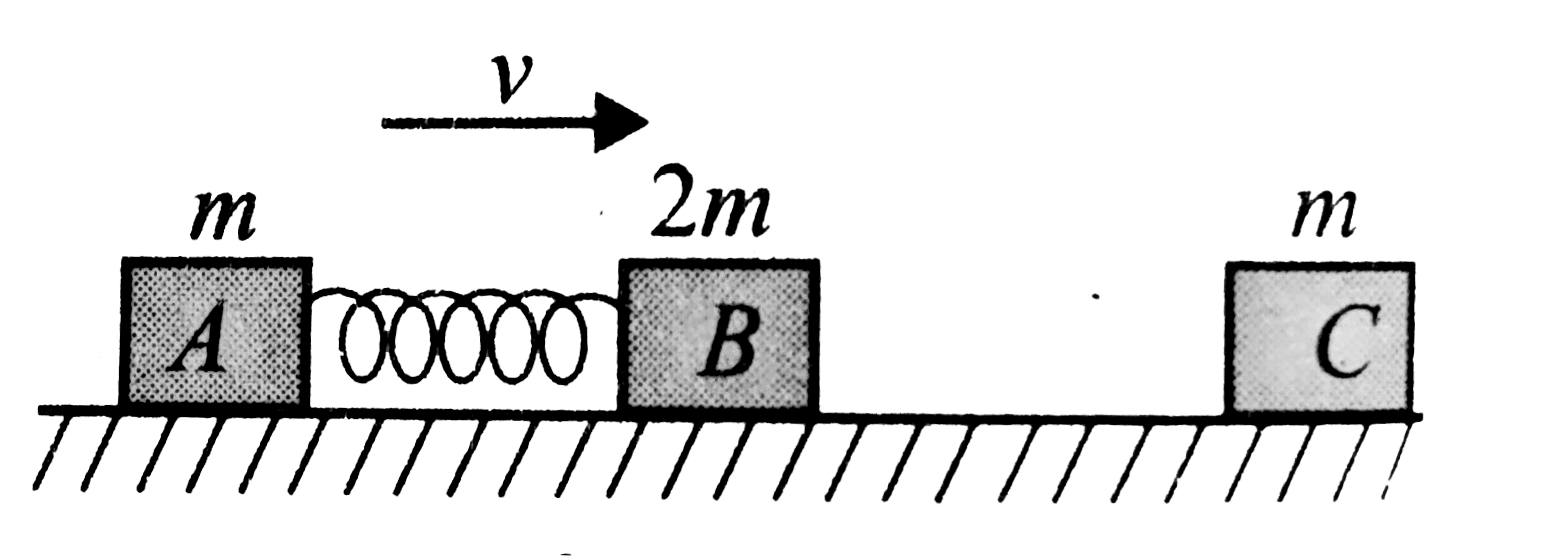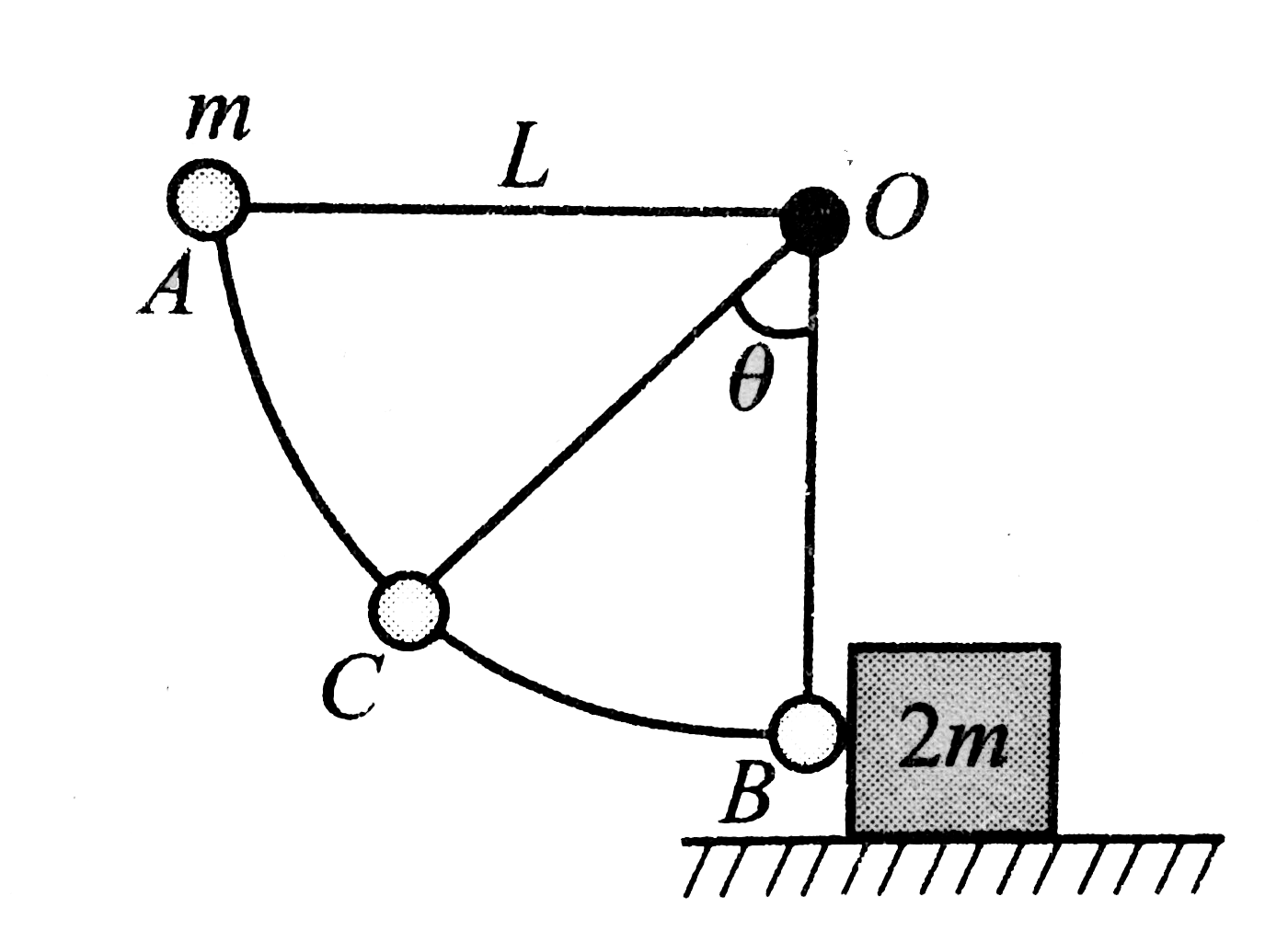In an inelastic collision
momentum is not conserved
momentum is conserved but kinetic energy is not conserved
both momentum and kinetic energy are conserved.
neither momentum nor kinetic energy is conserved
The correct Answer is:B
To solve the question regarding inelastic collisions, we need to analyze the properties of momentum and kinetic energy during such events. Here’s a step-by-step breakdown:
Step 1: Understanding the Definition of Inelastic Collision
An inelastic collision is defined as a collision in which the colliding objects do not bounce off each other completely. Instead, they may stick together or deform, resulting in a loss of kinetic energy.
Hint: Remember that inelastic collisions involve some form of deformation or sticking together of the colliding objects.
Step 2: Conservation of Momentum
In any type of collision, including inelastic collisions, the law of conservation of momentum applies. This means that the total momentum before the collision is equal to the total momentum after the collision.
Hint: Momentum is always conserved in all types of collisions, regardless of whether they are elastic or inelastic.
Step 3: Kinetic Energy Consideration
In inelastic collisions, while momentum is conserved, kinetic energy is not conserved. This is because some of the kinetic energy is transformed into other forms of energy (like heat, sound, or internal energy due to deformation).
Hint: Kinetic energy before the collision does not equal kinetic energy after the collision in inelastic collisions.
Step 4: Evaluating the Options
Now, let's evaluate the given options based on our understanding:
1. Momentum is not conserved - This is incorrect because momentum is conserved in all collisions.
2. Momentum is conserved but kinetic energy is not conserved - This is correct as per our analysis.
3. Both momentum and kinetic energy are conserved - This is incorrect since kinetic energy is not conserved in inelastic collisions.
4. Neither momentum nor kinetic energy is conserved - This is also incorrect as momentum is conserved.
Conclusion
The correct answer is that in an inelastic collision, momentum is conserved but kinetic energy is not conserved. Therefore, the correct option is the second one.
Final Answer: Momentum is conserved but kinetic energy is not conserved in an inelastic collision.
An inelastic collision is defined as a collision in which the colliding objects do not bounce off each other completely. Instead, they may stick together or deform, resulting in a loss of kinetic energy.
In any type of collision, including inelastic collisions, the law of conservation of momentum applies. This means that the total momentum before the collision is equal to the total momentum after the collision.
In inelastic collisions, while momentum is conserved, kinetic energy is not conserved. This is because some of the kinetic energy is transformed into other forms of energy (like heat, sound, or internal energy due to deformation).
Now, let's evaluate the given options based on our understanding:
1. Momentum is not conserved - This is incorrect because momentum is conserved in all collisions.
2. Momentum is conserved but kinetic energy is not conserved - This is correct as per our analysis.
3. Both momentum and kinetic energy are conserved - This is incorrect since kinetic energy is not conserved in inelastic collisions.
4. Neither momentum nor kinetic energy is conserved - This is also incorrect as momentum is conserved.
The correct answer is that in an inelastic collision, momentum is conserved but kinetic energy is not conserved. Therefore, the correct option is the second one.
Topper's Solved these Questions
- CENTRE OF MASSBOOK - DC PANDEY ENGLISHCHAPTER - CENTRE OF MASSEXERCISE - Match the coloumns
9 Videos
- CALORIMETRY AND HEAT TRANSFERBOOK - DC PANDEY ENGLISHCHAPTER - CALORIMETRY AND HEAT TRANSFEREXERCISE - Medical entrance s gallery
38 Videos
- CENTRE OF MASS, IMPULSE AND MOMENTUMBOOK - DC PANDEY ENGLISHCHAPTER - CENTRE OF MASS, IMPULSE AND MOMENTUMEXERCISE - Comprehension type questions
15 Videos
Similar Questions
Underline the correct alterntaive:
a) when a conservative force does positivie work on a body, the potential energy of the body increase/decreases/remains unaltered.
work done by a body against friction always results in a loss of its kinetic /potential energy.
c) The rate of change of total momentum of a many-particle system is proportional to the external force/ sum of the internal forces on the system.
d) In an inelastic collision of two bodies, the quantities which do not change after the collision are the total kinetic energy/total linear momentum/total enregy of the system of two bodies.
View SolutionIn inelastic collision,
View SolutionWhat will be the angle of reflection in case of an inelastic collision and v=?
View SolutionA ball hits a floor and rebounds after an inelastic collision. In this case
View SolutionA He+ ion is at rest and is in ground state. A necutron with intial kinetic energyK collides heads on with the He+ ion. Find minimum value of K so that there can be an inelastic collision between these two particals.

View SolutionAn electron of energy 11.2eV undergoes an inelastic collision with a hydrogen atom in its ground state [Neglect recoiling of atom as mH>>me]. Then is this case
View SolutionAnwer carefully, with reasons:
a) In an elastic collision of two billiard balls, is the total kinetic energy conserved during the short time of collision of the balls (i.e. when they are in contact)?
Is the total linear momentum conserved during the short time of an elastic collision of two balls?
c) What are the answers to a) and b) for an inelastic collision?
d) If the potenital energy of two billiard balls depends only on the separation distance between their centers, is the collision elastic or inelastic? (note we are talking here of potential energy corresponding to the force during collision, not gravitational potential energy).
View SolutionTwo blocks A and B of masses in and 2m, respectively, are connected with the help of a spring having spring constant, k as shown in Fig. Initially, both the blocks arc moving with same velocity v on a smooth horizontal plane with the spring in its natural length. During their course of motion, block B makes an inelastic collision with block C of mass m which is initially at rest. The coefficient of restitution for the collision is 1/2. The maximum compression in the spring is

View SolutionA ball of mass m is attached to a cord of length L, pivoted at point O, as shown in Fig. The ball is released from rest at point A, swings down and makes an inelastic collision with a block of mass 2m kept on a rough horizontal floor. The coefficient of restitution of collision is e=2/3 and coefficient of friction between block and surface is After collision, the ball comes momentarily to rest at C when cord makes an angle of θ with the vertical and block moves a distance of 3L/2 on rough horizontal floor before stopping. The values of μ and θ are, respectively,

View SolutionAssertion : A moving ball having an inelastic collison withh another moving ball can have larger kinetic energy after collision.
Reason: During a collision between two bodies, transfer of energy mayh take place from one body to another.
View Solution
